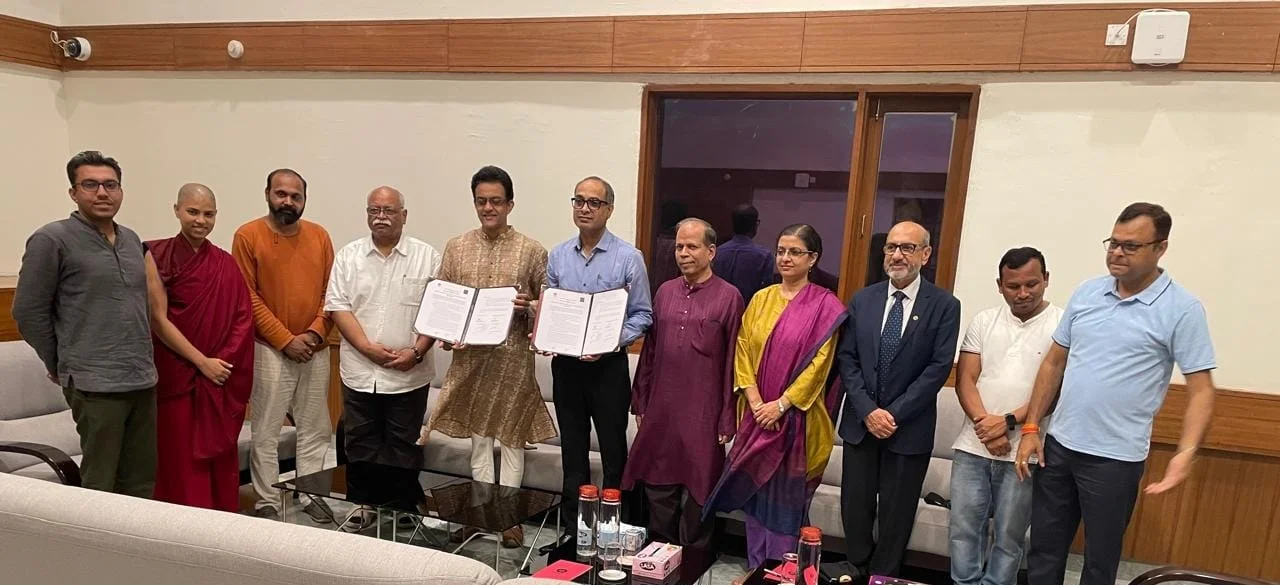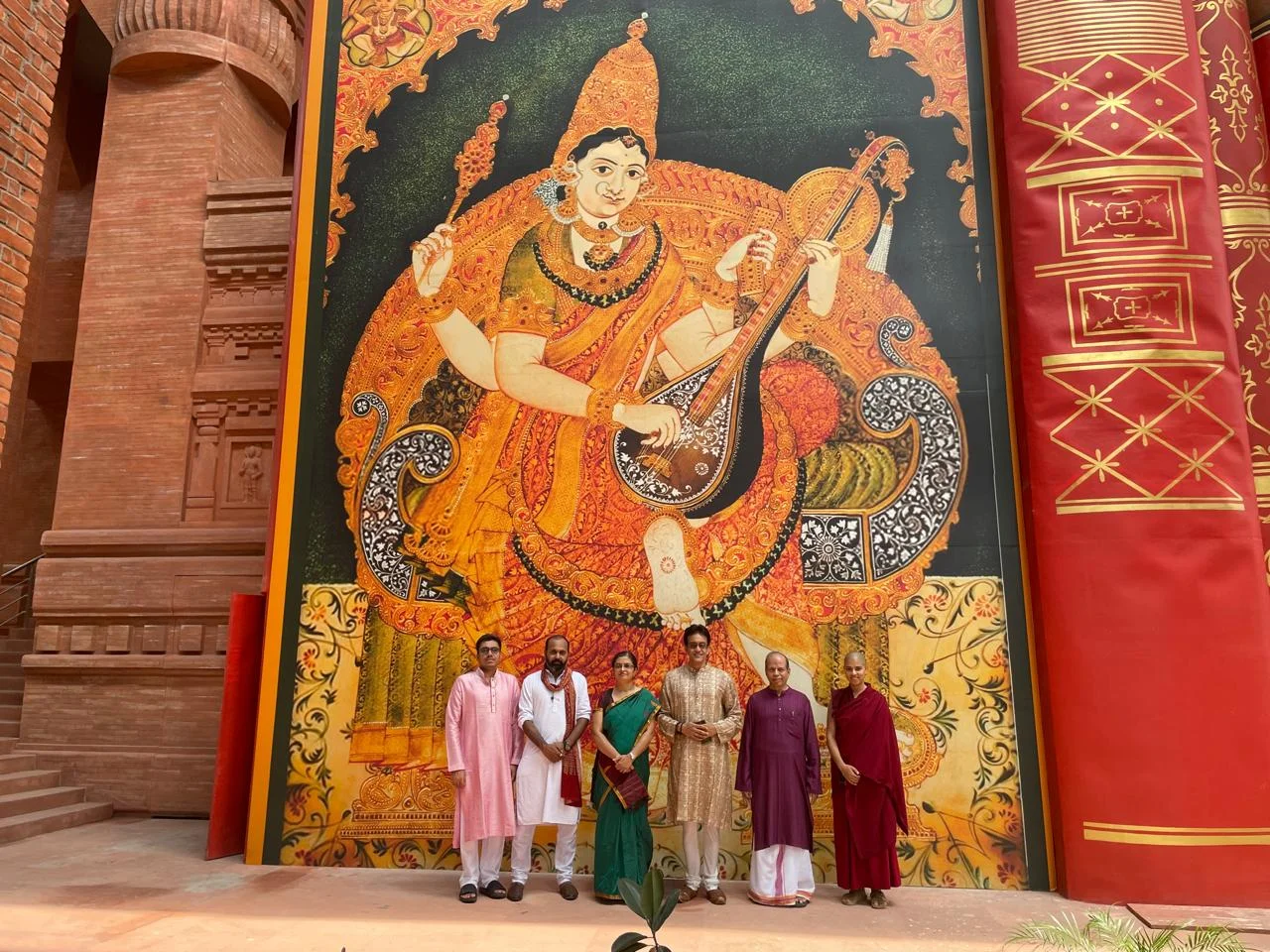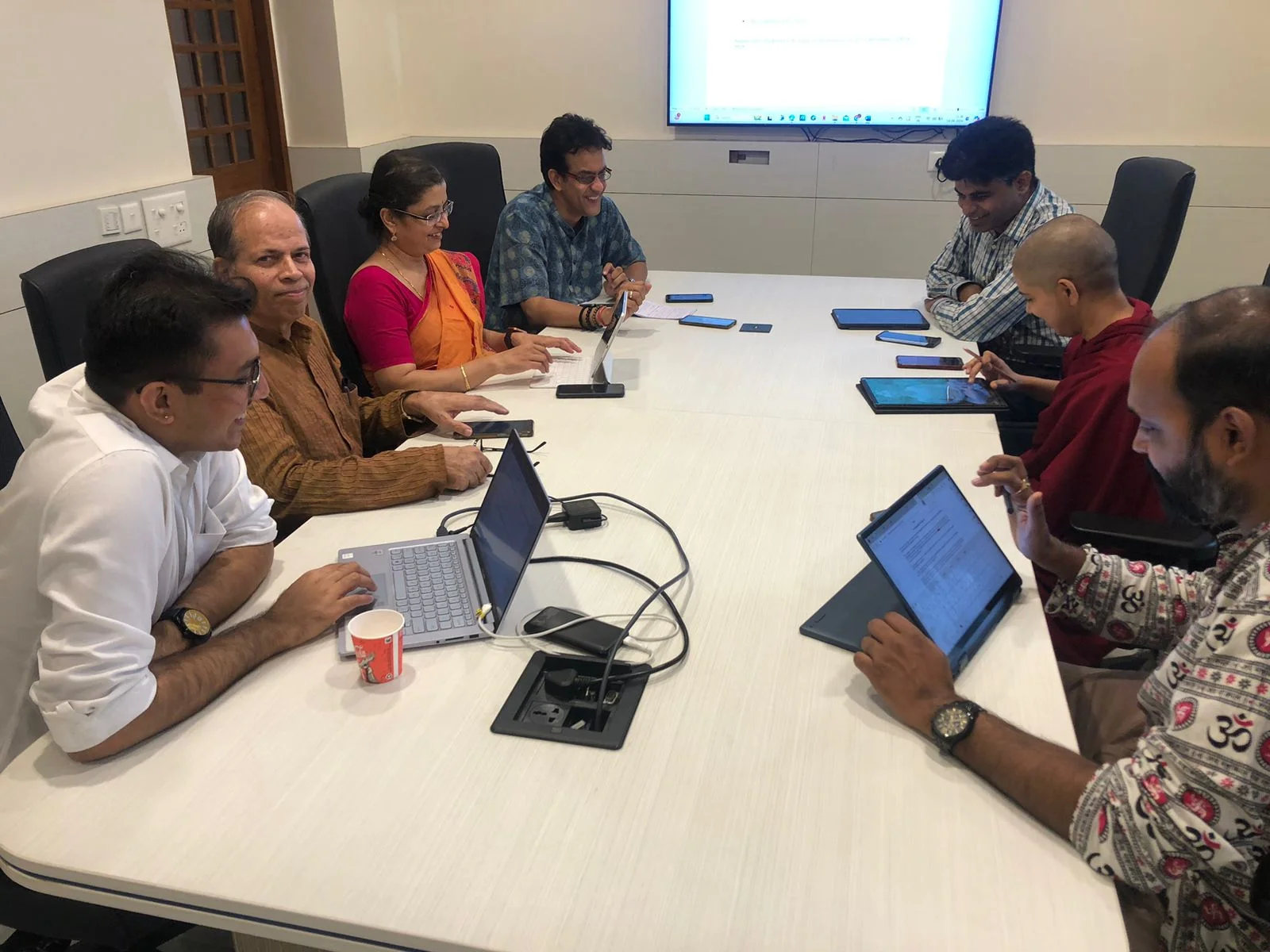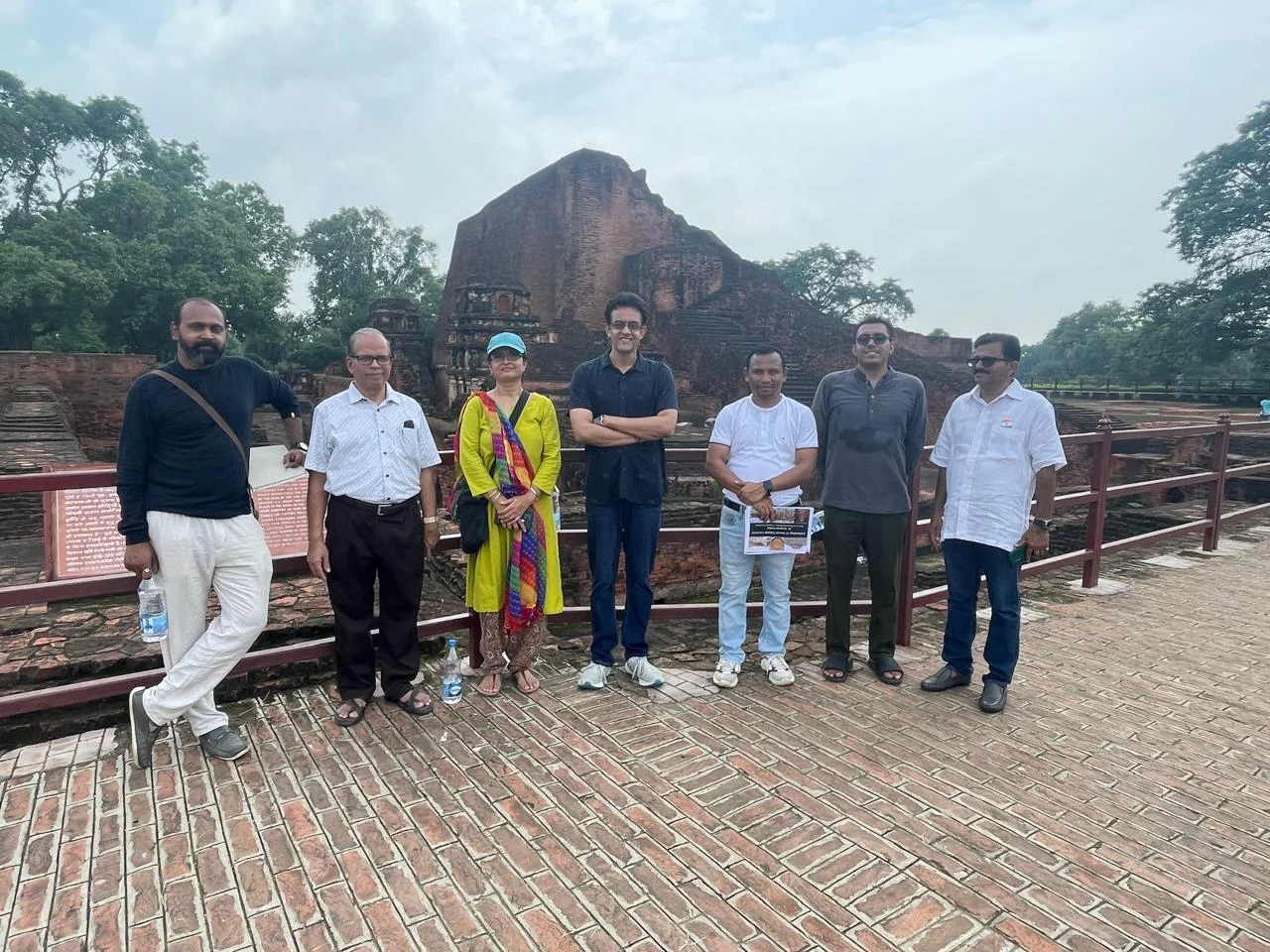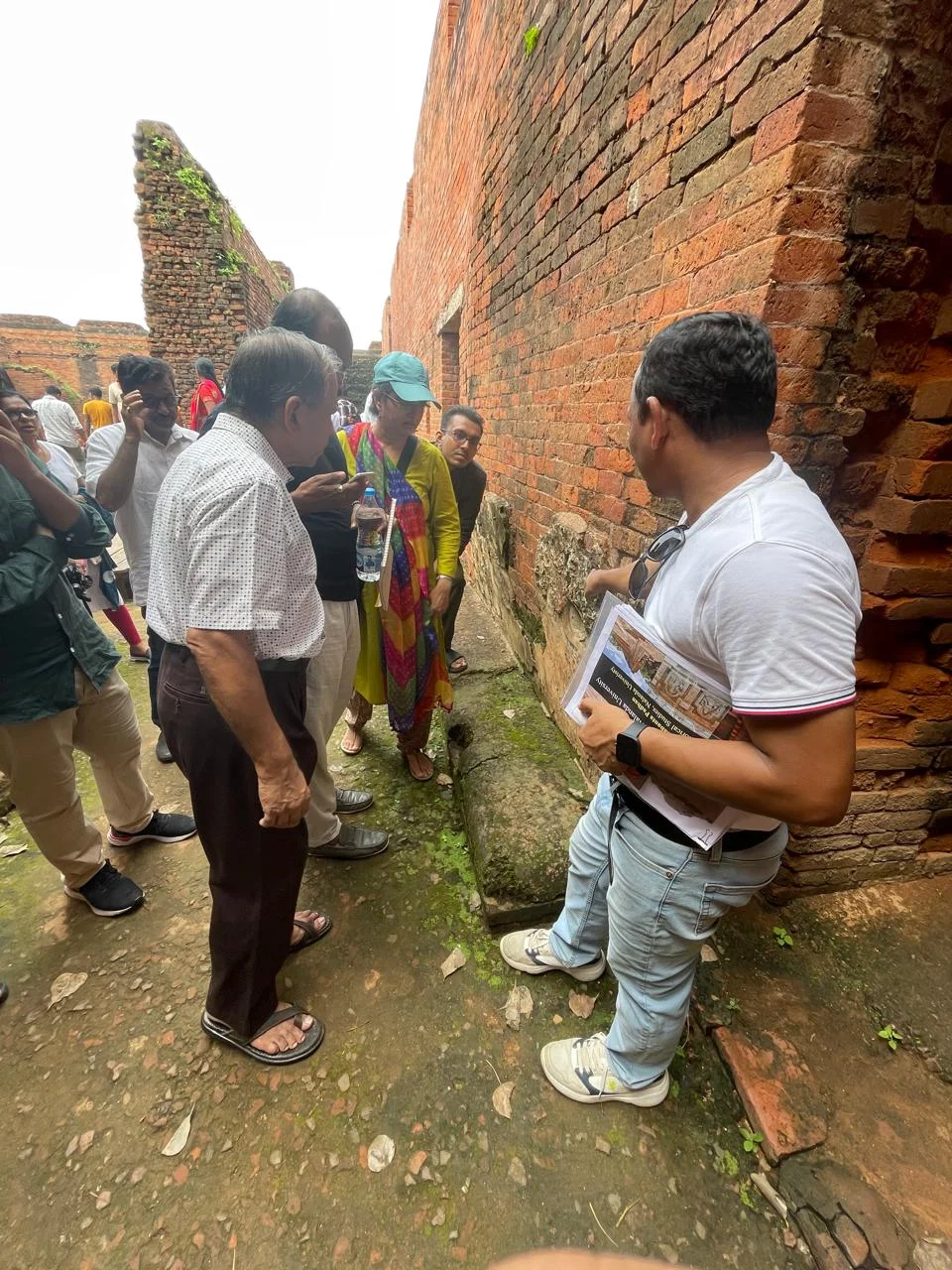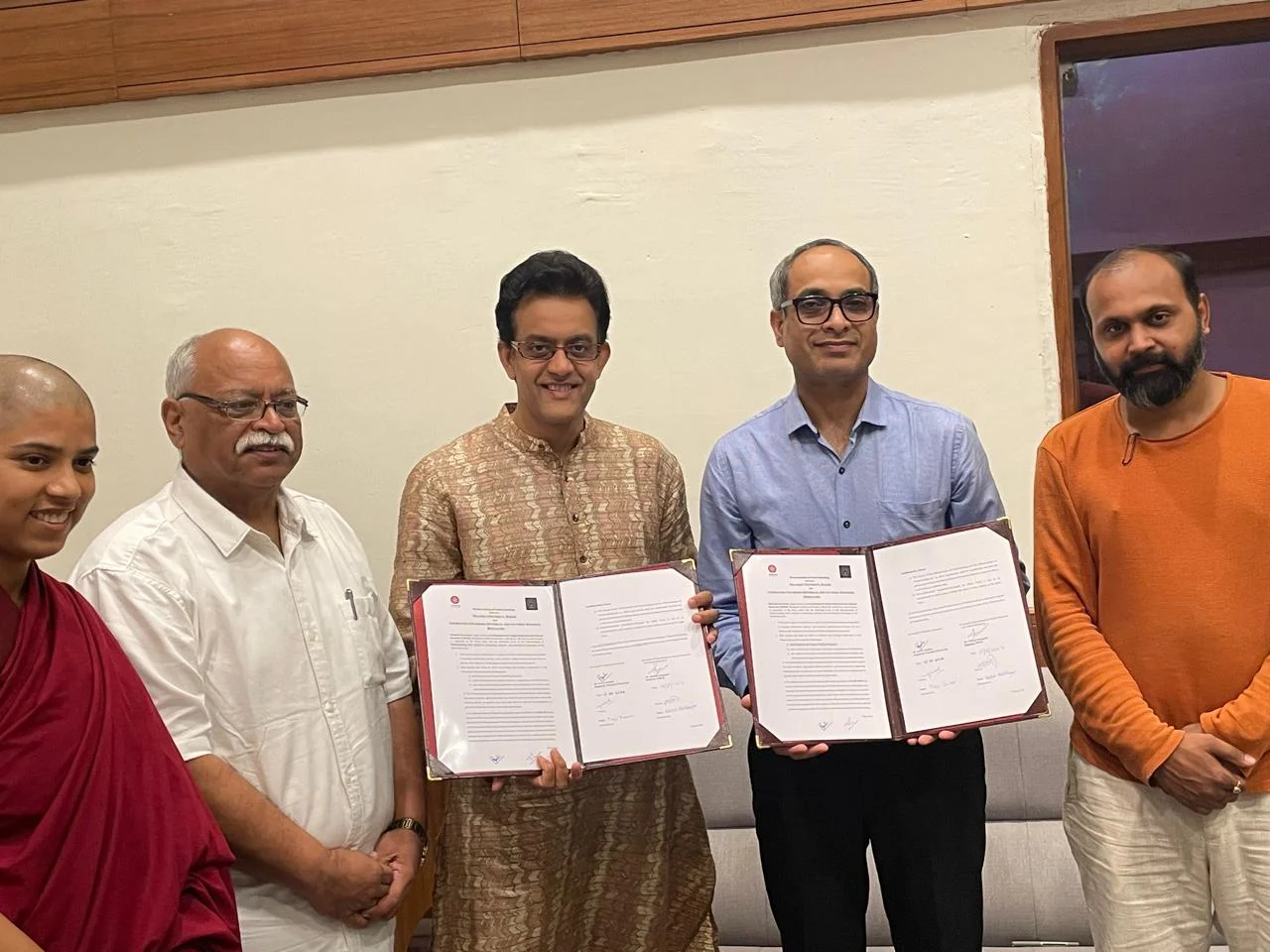
Buddhism in Bharat
The first major initiative of 2024-25 that FIHCR is undertaking, in collaboration with Nalanda University, is a research and documentation project on the history of Buddhism in India. This comprehensive account, grounded in an in-depth study of primary sources in Sanskrit, Pali, Prakrit, Tibetan, and other languages, aims to dispel numerous myths and misunderstandings surrounding this significant subject. With a multidisciplinary approach, the project brings together expertise in history, Buddhist studies, Buddhist philosophy, archaeology, and linguistics. The intended outcomes include a book series on the subject, as well as scholarly articles and journal publications.
FIHCR, represented by Dr. Jappen Oberoi (Head, Research & Projects; Epigraphist & Numismatist) and Sudhamshu Hattangadi (Associate Program Manager: Projects), spent three deeply rewarding and highly productive days (20-22 June, 2025) decoding significant inscriptions and coins as part of FIHCR’s flagship initiative Buddhism in Bharat.
The team contributed to the documentation of rare and exquisite sculptures, coins, and inscriptions housed in the Mathura Museum and the National Museum, New Delhi.
The final day of the research trip was devoted to the decipherment of the Bahapur Ashokan Minor Rock Edict and the Delhi Topra Major Pillar Edict—monumental sources that will provide rich insights for our forthcoming publications on Buddhism.
This important effort will significantly elevate our project on Buddhism in Bharat, enhancing both the scope and depth of the project
Gallery














